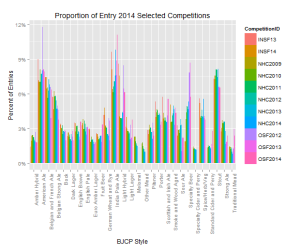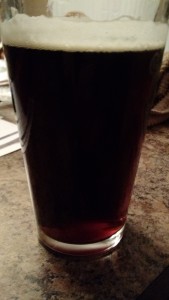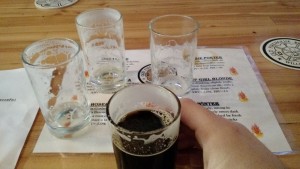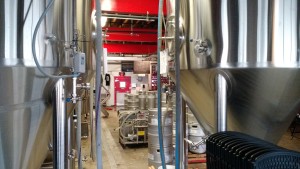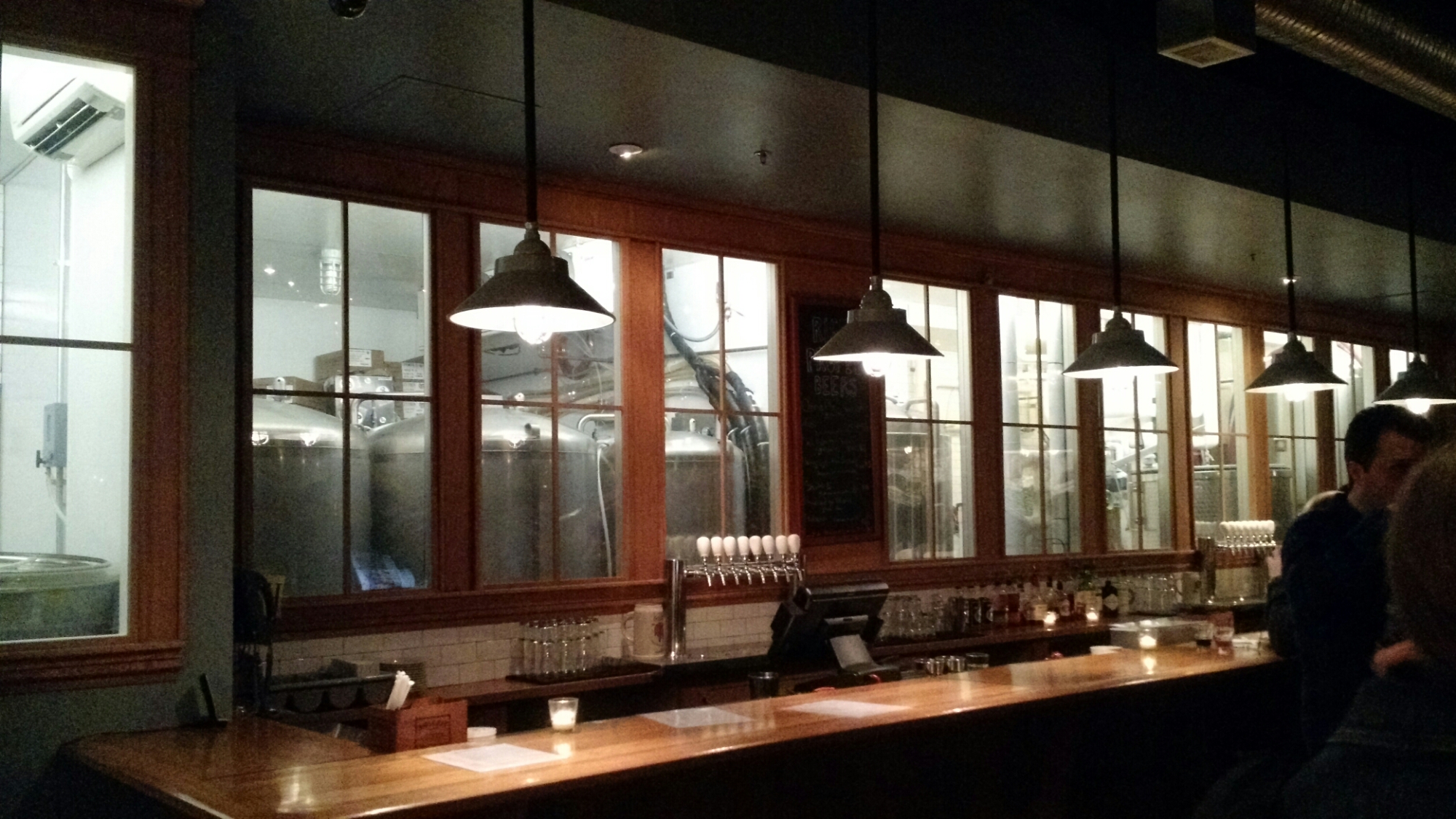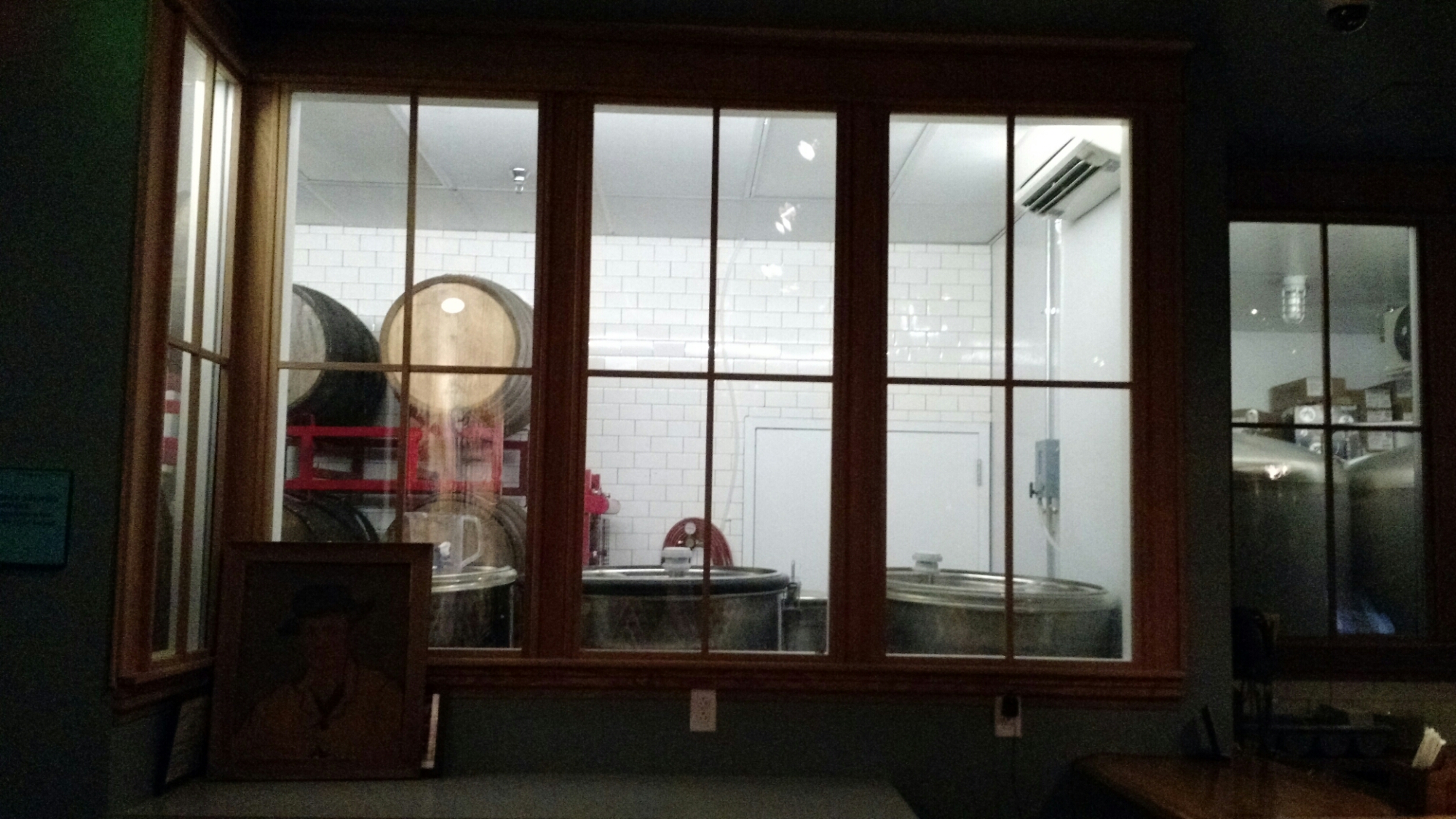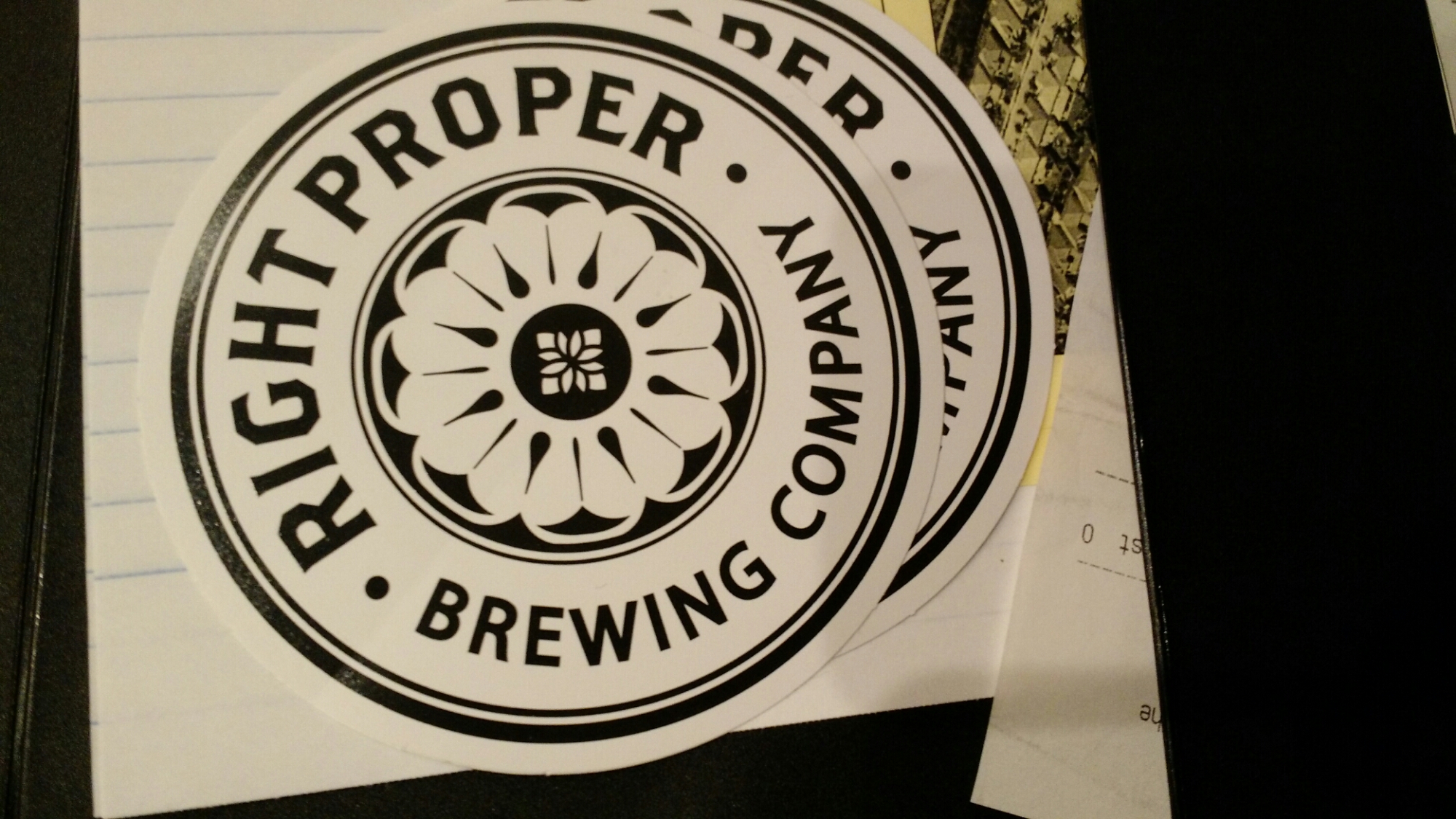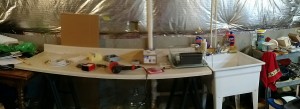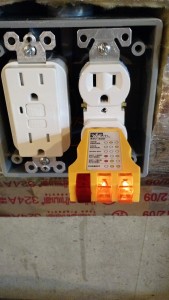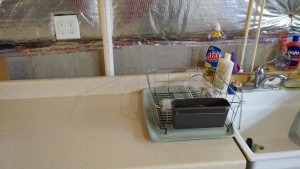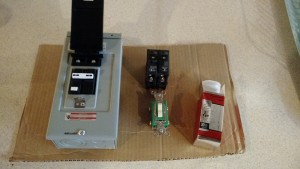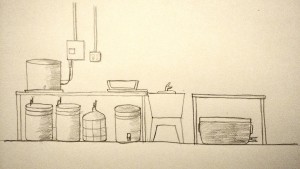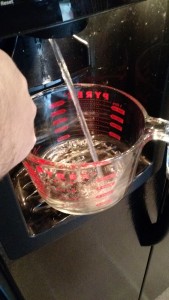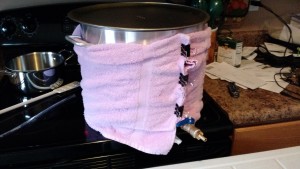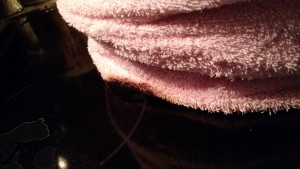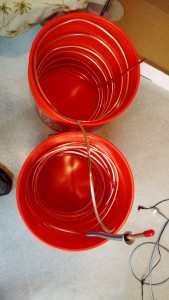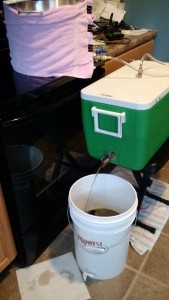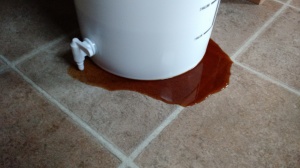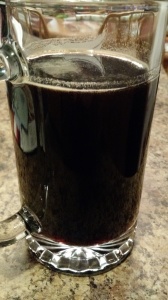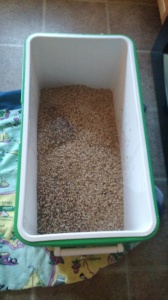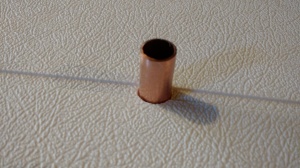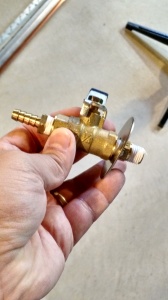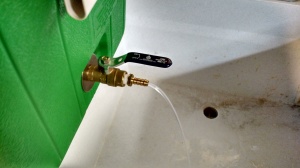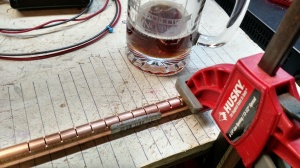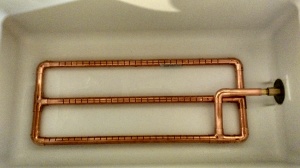Beer
Looking at Beer Competitions
I looked into a few homebrewing competitions. I think I mostly wanted to look at how big the categories are.
Data
The data I found is from the National Homebrewing Competition, the Indiana State Fair, and the Ohio State Fair. Only partial datasets were used from the state fairs, because not all the data I need is on their websites. This data is far from perfect, but I think the conclusions I make below are still valid.
Growth
As shown above, there has been a lot of growth in the National Homebrew Competition. From 2009 to 2012, it grew by 50% and by 2014 it grew even more. The states did not show any growth. We’re in a golden age of homebrewing where the Internet helps new homebrewers along, a craft beer surge that shows everyone that not all beer is a Light American Lager. I think this has helped increase the NHC.
Bud’s crack on craft brewing will likely help homebrewing as well as craft beer. After all, 44% of drinkers age 21-27 have never tasted it. Not sure if they’ve had a craft beer either, though (they could be wine or whiskey drinkers).
Styles
I visually looked through to see the top five and bottom five. I didn’t do any actual analysis other than that.
Top 5: American Ale, IPA, Stout, Belgian and French, and Belgian Strong
It is probably expected that American Ales and IPAs would be big styles. I think a lot of people that ‘stick their foot in’ to craft beer start with amber or pale ales and probably soon make it to IPAs. After being in the hobby for 6 months, I’m not shocked to see strong numbers from Stout – it seems like the non-hop-head craft beer lovers gravitate towards good stouts. Also, Stout allows for some flexibility with ingredients without becoming something not-beer. I’m also not shocked to see Belgian and French, and Belgian Strong classes represented well, as many of the homebrewers I know have a profound interest in those two classes (specifically in saisons, tripels, and quadrupels).
Bottom 5: Amber Hybrid, Strong Ale, Sour Ale, Euro Amber Lager, and Dark Lager
Amber Hybrid (which includes Northern German Altbier, Dusseldorf Altbier, and California Common) is one I would have expected to be higher, although that is mostly because of the California Common style. BYO Magazine recently did a feature article on this, perhaps we’ll see some growth there. As far as altbier, I’m not sure my three local bottle shops have any altbier that would be within these styles. I don’t know about others, but I’d sure be apprehensive of brewing a style I’ve never tasted.
Strong Ale was a little shocking. I expected more people to use barleywine to show off malt selection.
I didn’t think it was shocking that sour ale was among the bottom, but maybe that’s because I find them intimidating from the brewing standpoint.
I was shocked to see both the Euro Amber Lager and Dark Lager among the bottom five. These two style groups include some of my favorites in the lager kingdom, Oktoberfest and Schwarzbier.
From my point of view on one of the hills east of Cincinnati, though, I am partially not shocked about all but one of the bottom 5 being lagers. According to the temperature on my ale pail, fermentation holds around 64-66 degrees (Fahrenheit, 18-19 Celcius) in my basement with no temperature control. Perfect for ales, not so much for lagers. I eventually will brew some lagers, but I have to have better temperature control first.
An interesting contrast in the styles is the light hybrid group. Apparently this is pretty common in the midwest, but not nationally – it’s pretty low for NHC, but pretty high for both the state fairs. This includes cream ale, blonde ale, Kolsch, and american wheat or rye. My only guess here is that we have a local soft spot for Little King’s Cream Ale.
Growth and Losses
I looked at this by looking at the slope of the trend based on the NHC data.
The biggest growth style classes are IPA, American Ale, Stout, Belgian and French Ale, and Spice, Herb, and Vegetable Beer. I don’t find any of these shocking except the spice, herb, and vegetable class.
The losing classes are all meads. I’m not sure what to think of that. On one hand, it isn’t uncommon to find a homebrewer that is at least interested in fermenting mead. On the other hand, good honey is incredibly expensive, and that may factor into things.
The not-really-growing classes are Pilsner, Specialty Cider & Perry, German Wheat & Rye, Light Lager, and Standard Cider & Perry. Regarding cider and light lager, I’m not shocked. While I don’t think the hobby is bent against ciders, perries, and light lagers, I think there is a segment of beer drinkers that look on those three groups as being inferior. I don’t agree with them (and I have a cider experiment going on in the basement now), but I think it exists.
That leaves Pilsner and German Wheat & Rye as the odd men out. I’m not sure why, as every beer geek worth his (or her) glass knows that Pilsner is different from Light Lager (and generally regarded as far better). Perhaps it has to do with the difficulty in water chemistry and fermenting. Regarding German Wheat and Rye, I don’t know. It’s not among my favorite styles, but that doesn’t really mean anything to others.
So What’s This All Mean?
Nothing. Nada. Jack Shit. I’m a data geek in real life and wanted to look into this. Awards don’t matter, your taste does. Brew what you like, because if you come in from work and look forward to opening another homebrew, you’re doin’ it right.
…but I understand if you still want to win an award (I do). It’s kinda like getting a medal at the end of a (running) race. The medal symbolizes the work that went into training for that event. Similarly, a beer award symbolizes the work put into formulating and executing a recipe.
Cheers!
Radio Red Ale
I brewed my best beer so far – a subtly hoppy amber ale. This is the beer I’m going to enter into the Cincinnati Malt Infusers competition. It came out well – I can’t stop drinking it, and I can’t stop thinking about different things I want to try with the recipe. Of course I need to brew more of this as I can’t stop grabbing it out of the fridge.
Recipe
Recipe Details
| Batch Size | Boil Time | IBU | SRM | Est. OG | Est. FG | ABV |
|---|---|---|---|---|---|---|
| 5 gal | 60 min | 36.5 IBUs | 13.0 SRM | 1.058 | 1.016 | 5.5 % |
| Actuals | 1.046 | 1.01 | 4.7 % | |||
Style Details
| Name | Cat. | OG Range | FG Range | IBU | SRM | Carb | ABV |
|---|---|---|---|---|---|---|---|
| American Amber Ale | 6 B | 1.045 - 1.056 | 1.01 - 1.015 | 20 - 40 | 11 - 18 | 2.3 - 2.8 | 4.5 - 5.7 % |
Fermentables
| Name | Amount | % |
|---|---|---|
| Pale Malt (2 Row) US | 10 lbs | 88.89 |
| Caramel/Crystal Malt - 40L | 1 lbs | 8.89 |
| Roasted Barley | 4 oz | 2.22 |
Hops
| Name | Amount | Time | Use | Form | Alpha % |
|---|---|---|---|---|---|
| Centennial | 0.75 oz | 60 min | Boil | Pellet | 9 |
| Centennial | 1 oz | 15 min | Boil | Pellet | 9 |
| Citra | 1 oz | 7 days | Dry Hop | Pellet | 12 |
Yeast
| Name | Lab | Attenuation | Temperature |
|---|---|---|---|
| American Ale (1056) | Wyeast Labs | 75% | 60°F - 72°F |
Mash
| Step | Temperature | Time |
|---|---|---|
| Mash In | 156°F | 88 min |
Download
| Download this recipe's BeerXML file |
Recipe licensed under the Creative Commons “by-nc” license.
Taste and Stuff
I love the flavor. I love the citrus hop flavor coming through. The beer has a great head and lacing. My only concern (from a competition standpoint) is the color is a little darker than I expected, and I think I will get dinged for it. I am very happy with the clarity of the beer, though, as my second brew and only partial mash beer was an IPA that tasted great but was very cloudy. This is pretty clear.
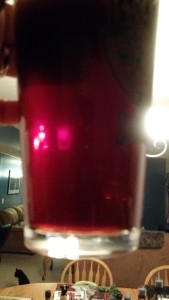
Not the greatest picture artistically, but good to show the clarity and color. It does have a red hue.
Prost!
Seeking the Source
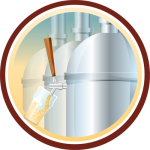
I’m not very secretive about being new to homebrewing. And I’ve not had every type of beer, and each brewer (frequently) puts their own spin on things. Going to breweries is a nice way to get rare, unreleased, difficult to find, or beers that you wouldn’t buy in a large pack (e.g. from a style you don’t normally like). It also gives me a chance to develop my palete further (definitely a good thing), and remain part of the craft beer revolution that is happening.
I’ve visited a handful of breweries, and I’m trying to be better to seek out new, interesting, and local beers when I go out of town. Last October, I happened to be in Atlantic City and Tun Tavern is hooked onto a hotel that will be holding a conference I’m involved with. I was only in Atlantic City for two nights, and one of them had a (prearranged) dinner at a chain restaurant where the best beer on the menu was Yuengling (I guess it could be worse). So fortunately I made it there. It’s just a shame I didn’t take more than one picture. I found their flavors interesting, and fortunately not in a bad way.
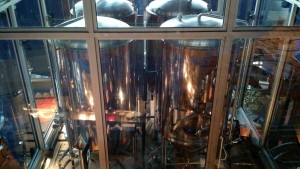
My lone pic of Tun Tavern from a second floor window. And the poor pic does not do their beer justice.
During the week prior to Christmas, I made it out to Listermann Brewing, courtesy of my awesome staff giving me a gift card there (it’s going to be worth their while!). Prior to making it out there, I had two beers by Listermann (and both were prior to really knowing what I was getting). One was a Scottish Ale. Which is too malty for my tastes. The other was Chicow!, which was also too sweet for me. However, in going to their brewery, I was able to get four beers that I had never had before, 562, Batch 300, Piquant, and Nutcase Peanut Butter Porter. Not only did I find these beers to be quite good, but also very interesting as the flavors (particularly in Piquant and Nutcase PBP) were different from what I’ve had before. It made it worth the trip. My only regret is not getting a few pics, but I’ll be back – I still have around $0.23 left on that gift card and I KNOW I’ll need something soon (and of course I’ll try a few others while I’m there).
After Christmas, I made it out to 50 West Brewery. They have the best brewery food that I’ve ever had hands down. My wife and I had brunch, and both meals (the country fried steak and the biscuits and gravy) were EXCELLENT. I wasn’t a huge fan of all their beers – it seems the summit hops they use are not my favorite. However, their Mooving Violation is a great stout that goes well with their brunch (or without their brunch, but personally I’d recommend the brunch).
Also after Christmas, I went over to Old Firehouse Brewery in Williamsburg. I should drop by here more often because it is not far from where I live. They have some excellent beers on tap. My only regret is not leaving with a howler of Probie Porter to go with the growler of Code 3 Red. OFB has a Gose beer on tap, and that was the first time I had anything in that style. It’s very good and would pair well with a warm summer day.
So fast forward two weeks to my annual DC trip. I found a reception at Right Proper Brewing Company. I looked at their website and found one beer out of four listed I was interested in – a Saison (their website has been updated since then). When I got in there, they had a great list of beers. I drank both of the Saisons they had on the menu as well as their porter – all were very good!
I visited one other brewery (well, brewpub) in DC while I was there, the Capital City Brewing Company. The beer was good, the food was good, service was a little slow, and I didn’t take any pictures. Regardless, I got to drink a beer I wouldn’t have otherwise (and I might be back to try more). DC is a yearly thing for me, so next year’s plan includes a trip to DC Brau.
Cheers to more visits!
Brewery Upgrade Phase 1
I did the first phase of upgrades. This wasn’t a whole lot of work, but after spending quite some time at the hardware store, it was enough to cap off the rest of a day.
So the first part was an outlet somewhere near the brewing area. I’ve never actually needed an outlet for brewing, but the counter sometimes serves other purposes (my food dehydrator, for example), so having some outlet space is useful. Plus, if I want to plug in a radio, my phone, or something like that, I don’t want to run an extension cord across the basement. Safety first and all that!
DISCLAIMER: I am not an electrician. What I’m documenting here is a result of research mixed with a little bit of theoretical knowledge and some experience. This is not a guide or how-to on how to do this.
So extending the outlet isn’t difficult. Black to brass, silver to silver, and bare to bare. Running it is a pain, but hooking up wires is easy. Testing is easy.

Sometimes twice (note the GFCI light is on, I pressed the test button and wanted to ensure that the other outlet was actually protected)
That was the first part of the improvements. The second part was another outlet, but this one was for a light. I tied it into a light socket nearby.
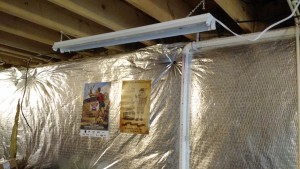
The finished light, sans bulbs (they didn’t come with the kit). This will operate with the switch to turn on all the basement lights.
So that’s phase 1.
Stay tuned for phase 2
Cheers!
New Brewing Setup Plan
After the last beast of a brew day, I want to fix my setup to make the next brew (soon, hopefully) easier. I don’t need all the fancy-pants pumps and stuff, but I do need a good way to heat water quickly and safely. Convenience is pretty important to me as well, so I’m not going to brew in my garage (no sink and poor electrical and poor lighting).
So I drew (literally) my plan.
This is a plan in four phases, and since I’m looking for content, I’m going to have a post for each phase.
Phase 1: 120v Upgrades This is minor upgrades to the electric at my brewing area including an outlet at the brewing station and a better light.
Phase 2: 240v Wiring This is the major part of the wiring. I’m not afraid of electricity at all (I’ve been shocked a few times), but I do take care (which is probably why those shocks weren’t enough to kill me).
Phase 3: Control Box Since I don’t have hundreds or thousands of dollars sitting around, I’m making my control box myself.
Phase 4: Finish Up and Testing I’m not doing all this stuff for my health! There’s a few things that will have to be added in, like a pump. Realistically, I’m going to need to another kettle, too, but that will be a while.
Cheers!
Another New Year Goal Post [Beer]
Ahh, the new year. The time every blogger writes a post filled with resolutions that they never get around to tracking or caring about. And I run three blogs on four topics (since this blog is both running and beer), so this is one out of four.
I’m a little different, I actually care about my goals. I’ve been thinking about the content of the goals for a few weeks, because there is some real importance to them to my brewing. So here they are…
1. Build a Better Brewing Area
My wife does not like the smell of wort, and my stove cannot heat 5+ gallons of wort very well. In fact, in my last post I lamented about the brewing situation. This will change, and it will change soon.
2. Unlock All of the Style Badges on Untappd
In becoming a homebrewer, I’ve thought A LOT about different beer styles. However, I’m definitely biased towards IPAs, Pale Ales, and Amber Ales. I want to change that for a variety of reasons, but mostly because I believe someone that is truly a brewer (whether professional or homebrewer) should have a well developed palate to know about beer. The list below is what is left at the time of typing (which is a few days before New Year’s Day, when I set this to post), and these will change before then because the last time I went to the good beer store I bought 1 IPA and 5 other beers).
- Heffenista (Hefeweizens, 4/5)
- Trappist Travesty (Trappist Style, 1/5) Update: 2/16/15
Pucker Up (Sour styles: Sour, Wild, Lambic, Gose, Berliner Weisse, Flanders Red, Flanders Oud Bruin, Gueze, or Faro, 3/5)1/22/15Trip to the Farm (Saison/Farmhouse, 2/5)1/11/15- Fruits of Your Labor (Fruit Beers, 1/5)
- Down in Smoke (Rauchbier, 0/5)
- I’ll be Bock* (Bock styles, 1/5)
Brewnettes Have More Fun* (Brown Ales, 4/5)1/29/15- The Wine of Beers (Barleywines, 2/5)
- Keep Your Wits About You (Witbier, 1/5)
- Hey Honey (Mead, 0/5)
(*) = The Untappd count is incorrect here – I have check-ins prior to the badge start date, so they are not counted. Not that it matters that much, I’ll drink a few more or re-drink some of them.
3. Visit Many Breweries in the Cincinnati Region
This is a hard one because breweries keep opening up, but there is value in going to the source. For starters, some of the breweries just aren’t at the local growler house when I am OR the beers they bottle are styles I don’t care for AND they have better beers on tap. Sometimes also they have experimental beers on tap. Usually draft tastes better, too (at least to me).
So in thinking about this blog post, I’ve made it out to Listermann, 50 West, and Old Firehouse, and I’ve been to Moerlein and Moerlein Lager House a few times. I intend to make it to MadTree before or just after this posts.
I’m going to limit the rest to Rhinegeist, Great Crescent, Rock Bottom (I’ve been there before, but that was as a Bud Light drinker), Mt. Carmel, Blank Slate, Paradise (my LHBS, so one of my next trips will involve tasting AND buying ingredients), Ei8ht Ball, and Braxton (I did buy a growler and some stickers through KickStarter, seems I should make it out there!).
There’s a lot more in the region (like Bad Tom Smith, Cellar Dweller, Rivertown, Quarter Barrel, Hofbrau Haus), but the reality is that it is that it is hard to have time to get to them and sample enough beers to make it worth going (and not anger my wife or drag the kids along!). More are opening this year (Tap & Screw, Fibonacci, DogBerry… and those are the ones we know about!), so that’s why I won’t say ‘all’. I’m fortunate this year that I have a chance where I will be “in the area” of a brewery for another reason and intend on taking care of blogness after taking care of business 🙂
4. Brew One Style that isn’t IPA, Pale Ale, Amber, Porter, or Stout
I have so far brewed a Pale Ale, an IPA, an Amber, and a Stout. I feel like I want to brew a saison or a barleywine or something like that. Or maybe a lambic. Or a gose for the summer. I don’t know, but something that isn’t ‘normal’ or a derivative (like a spiced amber ale that can be classified as a winter ale).
5. Make Headway into Kegging
I don’t like bottling beers. There, I said it. Like many other homebrewers. Kegging isn’t inexpensive to get into, but it is inexpensive to maintain (like brewing – it is fairly inexpensive to brew, but not inexpensive to buy the necessary equipment). I have a small CO2 tank, but no regulator and no kegs. And no fridge or keezer. And the CO2 tank may be too small to do more than one keg. There are dependencies all around, but I do want to be more than 1/4 of the major components into kegging by the end of the year. Depending on how much I want to look at Craigslist (etc) will dictate when I actually begin… and how quick I can make a better setup will dictate how quick I start buying more kegging equipment.
—
So there you have it! Another goal post from another random beer blogger. Got any thoughts? Leave ’em in the comments!
Cheers!
Beast of a Brew Day
I decided to brew an amber ale last weekend. Brew day started a little late because of family stuff, and it went later because of brewing stuff.
First off, I have water issues. Not dirty issues, chlorine issues. Because of that, my brewing water comes from my refrigerator as de-chlorinated cold water at around 40 degrees. I also had to do a few things related to my boiling bucket, because I really don’t like the idea of lifting 5-6 gallons (40-50 pounds) of hot water and trying to control it. And siphoning? FORGET ABOUT IT. I found that my auto-siphon bends in boiling water. So I added a valve.
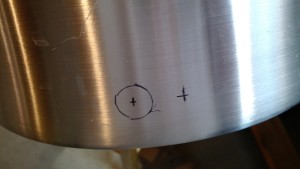
Locate twice, drill once. I nearly put it at the wrong spot, but before drilling I stopped and stood back to look and realized I wanted to go an inch to the right.
I pulled both my strike and sparge water and put them in clean ale pails before leaving for the hardware store for a valve and a cooling solution. The valve is temporary, and it even leaks, so I’m not going to show it. I’m going to order a three-part valve soon.
The Boil
The boil was long. Well, not long to boil, long to bring to a boil. I’m pushing the limit of my stove.
I used the recommendation of using a towel or blanket to keep the heat in. This made a little difference, but not enough. And it isn’t a great solution, as in the process of moving stuff around, I ended up with the following picture:
After waiting bloody-hell forever for boil to start and giving it the hour to boil, it was time to cool.
Cooling
The cooling solution sucks. I bought 1/4″ refrigerator line that I thought I’d run the wort through on it’s way to the ale pail. I figured I’d send the wort through two buckets, one with tap-cold water and the other with ice cold water.
I ran in to two problems. The first is that sanitizer in 1/4″ copper line can freeze. At least, I think that’s what happened. The other is it takes FOREVER to drain the bucket. It brought the wort down to 50F (20+ degrees below pitch temperature), although initially, some of the wort was as low as 34 degrees. It took a few hours to drain the bucket. This is not a good solution.
RDWHAHB
This was one week ago. Yesterday, prior to dry hopping, I tasted the beer from the fermenter (and tested gravity, although since dry hopping may cause additional fermentation it is an unnecessary measurement). I am VERY pleased with the flavor so far, so I think the ounce of Citra hops I threw in there will make it nearly perfect.
Regrouping
I was initially going to do another brew this weekend because January is a busy month for me. I decided that now is not the time, which means I will run out of my Left Coast IPA. That is a tragedy (I really do love IPAs), but I’ll survive, especially with that amber ale coming. I’ve decided that I need to make significant headwind at making Batavia Basement Brewing Company actually be in the basement. This means a heating element, temperature controller, water filter (this is in the works, and wife approved), and some two-phase electrical work.
Prost!
Charlie Is Right. RDWHAHB.
The words of Charlie Papazian in his book, The Complete Joy of Homebrewing (if you don’t own it, click that link and buy it, help support my site!) ring out on nearly every beer forum anywhere. It’s hard to follow the advice sometimes, but that doesn’t change that the advice is good.
My last brew is one that was… interesting. It was my first all-grain brew, and it was big. I also messed up a few places, I forgot to add the lactose until into the boil. I didn’t get the yield I wanted (and didn’t sparge to get it, even though I should have). My OG was high.
Fermentation was interesting, too. I split the batches, which resulted in about 2.25 gal (8.5 l) of wort once boil was over. I used Wyeast 1968, with a starter, which may have gone according to plan. I fermented one in a carboy and one in a bucket. The carboy bubbled and bubbled. In fact, I let it ferment an extra week because of how bubbly it was! Even with the FG settled at 1.034 (readings taken over a week apart, not just 3 days), it was still bubbling like it was fermenting. The bucket didn’t start bubbling at all. At one point I thought maybe it needed to be aerated and I shook (sort of) the bucket. It bubbled then (and only then) and so much so it pushed all the sanitizer out of the airlock. It’s FG settled to nearly the same as the carboy.
I will admit, I was worrying. The samples were a little thick and too sweet. I don’t care much for sweet beers. Two nights before bottling, I added a shot of vanilla tincture to one. The night before bottling, I added around 8oz of cold coffee to the other. I bottled them on the day before Thanksgiving, not without a minor issue.
I try- but never succeed- in giving beers a full two weeks of bottle conditioning. I put one of each batch in the fridge 10 days after bottling, and cracked one open as a nightcap after one of my kids’ birthday party. It was the vanilla, affectionately known as E=1/2mvStout (yes, I’m an engineer). I was still concerned that it would be thick, sweet, and not good.
I was wrong!
It was good. The vanilla was not as strong as I wanted (but perhaps I could have that as a play on the ‘1/2’ in the kinetic energy formula). The head is not what I wanted, but it’s a starting point, and a damn good one.
So the next evening I tried the coffee one, E=MCStout. I was concerned all along that the coffee flavor could overpower this one, as I have had coffee stout beers that were just too powerful with the coffee. At this point, though, I knew it was at least a 3.5 star beer, so I was less apprehensive about trying it.
It was better. Better than the vanilla stout.
The moral of the story: Mr. Papazian is right. Relax, don’t worry. Have a homebrew.
Prost!
Mash Sparging Sprinkler
Edit: I’ve decided that this is a bad idea. There is a TON of heat loss through this. Don’t do it unless you have a way to maintain temperature in the mash tun.
I have a brew in the fermenters, and my first all-grain batch is going to be … interesting.
One of the reasons why it will be interesting is because of the lack of a good way to evenly sprinkle water into the mash. So I fixed that problem.
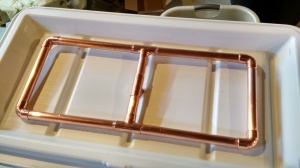
In place and ready
There’s a ton of holes off the bottom of the holes (I say off the bottom because I drilled at about a 30-45 degree angle from the bottom, this would hopefully equalize pressure. I won’t be pushing a lot of water through this, as it will be coming from the hot liquor tun through 5/16″ hose with only gravity as pressure.
Next brew day is coming up. I can’t wait.
/A
Building a Mash Tun
A few weeks ago (and I think I posted something quick about it here), I bought a 12 gallon cooler to be used as a mash tun. Over the past week and weekend, I started getting it together.
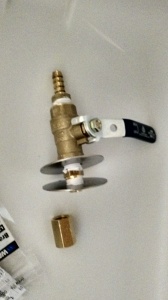
This is sort of the way things went together. I did add some exterior caulk between the internal washer and the cooler to provide a water-tight fit (and I tried several times to not use the caulk, but there seemed to be no way to do that without ending up with a leak).
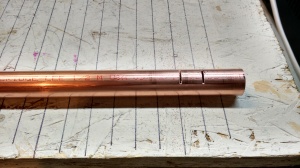
Starting on the copper for the drain lines. This is clamped down (gently!) on one end and I drew lines on my workbench at 1/2″ intervals to speed the process of sawing the slots.

Interior of the lines before cleaning. I found that a 1/2″ drill bit fit through the 1/2″ copper, so I ran it through a few times to remove the burrs.
Beer Update
The IPA is probably ready to be bottled, but I spent all my time doing yard work, building my mash tun, and fixing a Christmas tree stand that nearly sent a tree tumbling last year (She Who Must Be Obeyed was NOT happy about that!).
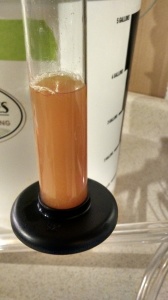
The color is lighter, probably because I added the DME near the end, but I was still looking for lighter. I’ll also want to get it clearer.

